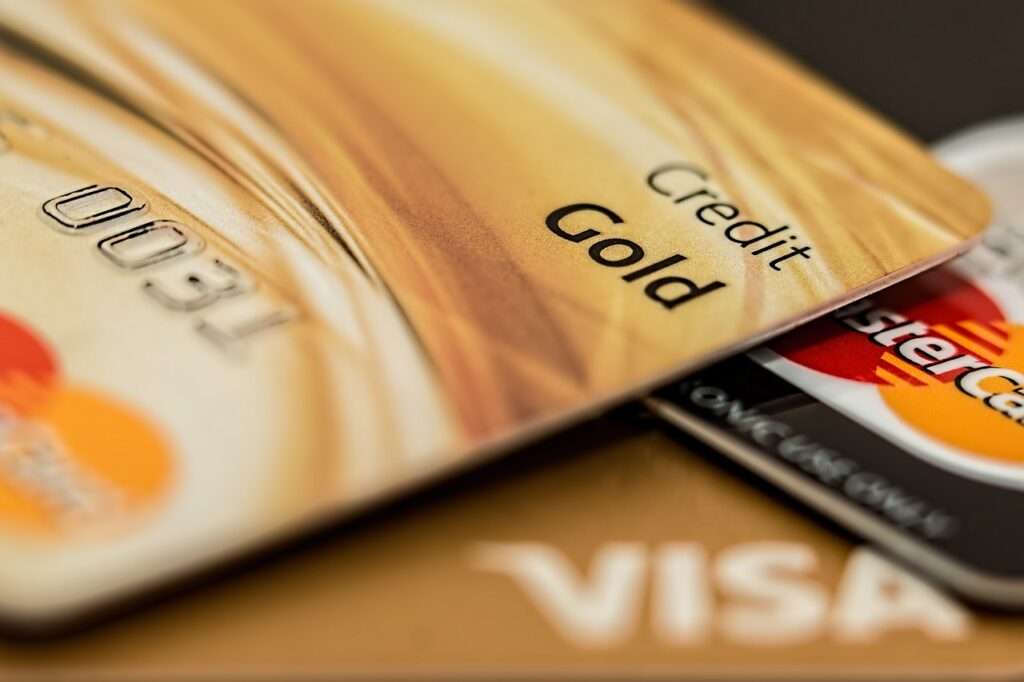By taking precautions, you can minimize the risk of identity theft when transmitting credit card information through mail, email, text, or other communication methods.
The credit card industry has improved its monitoring systems to proactively detect fraud. However, safeguarding your personal data remains crucial in preventing identity theft. To protect your sensitive information, especially credit card details, it’s essential to be cautious about whom you share this information with and how you do so.
Different forms of communication carry varying risks, and certain methods offer better protection than others. Here’s how you can ensure maximum security for your personal data when using each form of communication.
Email was not originally designed with data privacy as its primary focus, although some email providers are now incorporating security measures. However, when you send an email, its contents can be stored on multiple servers throughout its journey, depending on the route it takes. Additionally, emails are stored in various folders in both your account and the recipient’s account, creating potential vulnerabilities for your credit card information in case of unauthorized access or hacking attempts.
To protect your sensitive information when using email, there are several steps you can take. First, if you have previously sent credit card or other sensitive details via email, make sure to search your sent folder and permanently delete any such information. This helps reduce the risk of your data falling into the wrong hands.
For future email communications, you can further mitigate the risk by considering encryption options. Encrypting your emails adds an extra layer of protection, making it harder for unauthorized individuals to access the content. Alternatively, you can opt for an email provider that automatically encrypts messages, ensuring that your information is better safeguarded throughout its journey.
Shirley Inscoe, a senior analyst at Aite Group, an independent research and advisory firm, emphasizes the importance of understanding whether emails are encrypted solely during transmission or while stored on the server as well. It is vital to double-check this aspect, as if the content remains accessible on a server, it could still be vulnerable to unauthorized access even during its storage.
According to Google, their email service Gmail ensures encryption of messages both while in transit between data centers and when stored on their servers (“encrypted at rest”). Additionally, Gmail users have the option to enable Confidential Mode, which provides added security by restricting recipients from forwarding, copying, downloading, or printing the email. Furthermore, Confidential Mode allows you to set an expiration date for the message, enhancing privacy for sensitive communications. Microsoft Outlook also offers a feature that allows users to encrypt individual messages, providing an extra layer of protection for confidential information.
For those seeking additional encryption options, there are various encryption software available, with some free online versions such as PreVeil and SecureMyEmail. However, it is essential to exercise caution and thoroughly vet any encryption software before using it. Not all encryption tools are equally secure, so conducting research and choosing reputable options can help ensure your data remains protected. Trustworthy encryption software adds an extra level of security to your communications, making it harder for unauthorized parties to access sensitive information.
In general, hackers find it challenging to access text messages due to the security measures in place. However, once a text message containing credit card information is received and remains in the inbox or sent folder, it becomes vulnerable to potential exposure. If your phone gets stolen or the recipient’s phone is compromised, the thief may gain access to the sensitive information.
To enhance the security of your credit card information when using text messages, there are steps you can take. Consider installing a text message encryption app on your phone that offers self-destruct functionality. This feature ensures that the text containing your credit card details will be automatically deleted from both the sender’s and recipient’s phones after a predetermined period, reducing the exposure and minimizing the risk of unauthorized access. Signal is an example of such an app, available for both iPhone and Android users.
Additionally, it is essential to set up your phone’s screen lock feature to activate when idle. By doing so, you add a simple yet effective layer of protection to your phone and all the sensitive data it contains, making it harder for unauthorized users to access your information. By taking these precautionary measures, you can safeguard your credit card details when using text messages on your mobile device.
In today’s digital age, sending credit card information through postal mail is relatively rare, but there may still be occasional instances where you receive a bill or order form that requests such sensitive data. Despite strict laws regarding mail theft in the United States, sending sensitive information through traditional mail carries inherent risks. Your credit card details could potentially be compromised before the mail carrier collects it from your mailbox or even after it has been delivered.
To reduce the risk of identity theft and unauthorized access to your credit card information, Shirley Inscoe advises against raising the red flag on your mailbox when sending sensitive mail, as it may draw the attention of potential identity thieves. Instead, opt to hand the mail directly to the carrier or drop it in the letter slot at the post office. Additionally, consider using certified mail, which provides a confirmation of delivery to the intended recipient.
If you must send credit card information via postal mail, it is essential to avoid leaving it in your mailbox for pickup. A proactive step you can take is signing up for Informed Delivery through the United States Postal Service (USPS). This service allows you to preview your incoming mail, enabling you to identify if any items containing personal information are missing from your mailbox. This way, you can quickly address any potential issues and ensure the safety of your sensitive data during the mailing process.
Identifying a secure website is relatively straightforward, as it will begin with “https” (with an “S”) in its URL, and in many cases, a lock icon will be displayed. The presence of “https” indicates that the website uses encryption to safeguard any information you send through it, ensuring a higher level of security. However, while secure websites protect your data during transmission, it’s crucial to remain vigilant as your credit card information may still be at risk under certain circumstances.
For instance, if your computer is infected with spyware or you are using a public computer, your credit card information can be compromised despite the website’s encryption. Hackers may access your sensitive data if they target the company responsible for the website and gain unauthorized access to their servers where customer information is stored.
To bolster your security while using secure websites, there are several precautionary measures you can take. Ensure that your computer has updated malware protection to guard against spyware attacks. Avoid clicking on unfamiliar links in emails or pop-up ads, as they may lead to malicious websites seeking to exploit your data. Familiarize yourself with signs of spyware on your computer and, if suspicious, run a thorough scan using legitimate anti-spyware software to detect and remove any threats promptly.
By staying vigilant and implementing these protective steps, you can enhance the safety of your credit card information when using secure websites, making it more challenging for cybercriminals to access your data illicitly.
While a website displaying “https” or a lock icon in the address bar indicates a secure connection between you and the website, it doesn’t guarantee the trustworthiness of the website’s operators. Even though your credit card data may be protected from interception during transmission, if the website is being run by criminals, your information remains compromised. In other words, a “secure” website doesn’t necessarily mean its safe, as the security of the connection doesn’t reflect the intentions or integrity of the people behind the website.
When both the sending and receiving fax machines operate over traditional telephone lines, the risk of hacking is minimal as any unauthorized access attempts would result in the familiar screeching sound. However, if the fax transmission is email-based, your information becomes as vulnerable as it would be in an unencrypted email. Therefore, it is essential to exercise caution when using email-based fax services.
Additionally, there is a concern with phone-based fax systems regarding the security of the delivered fax. The intended recipient may not be the only person with access to the fax once it has been delivered. During the time it awaits pickup, several individuals may potentially see its contents. Shirley Inscoe raises the point that printed faxes may inadvertently end up being misplaced or left unattended on someone’s desk, exposing the content to cleaning staff, security personnel, and other employees in the office.
To mitigate risks associated with fax communications, especially email-based faxes, consider employing encryption measures to safeguard your sensitive information during transmission. Additionally, it is advisable to be mindful of the potential exposure of physical fax documents and take appropriate precautions to protect them in office environments.
To enhance the security of faxed credit card information, there are several proactive steps you can take. Before sending sensitive data, communicate with the intended recipient and request that they stand by the fax machine to promptly receive the information as soon as it arrives. Ensure they confirm receipt to minimize the risk of exposure while the fax awaits pickup.
Additionally, inquire about the type of fax machine being used. If the recipient’s fax system is email-based, it’s essential to take extra precautions. Shirley Inscoe advises verifying that the transmission is encrypted or, alternatively, upload the fax to a secure server using an encrypted web connection for added protection.
Being proactive in protecting your credit card information is vital. Inscoe recommends that consumers ask questions and seek reassurance from the recipients about the security measures in place. If the answers are not satisfactory or if doubts persist, consider using alternative methods for transmitting confidential data. By actively raising security and privacy concerns and insisting on safer practices, consumers can encourage companies to take these issues more seriously and prioritize safeguarding sensitive information. This collective effort to prioritize security can lead to more secure and reliable methods for transmitting credit card data.



